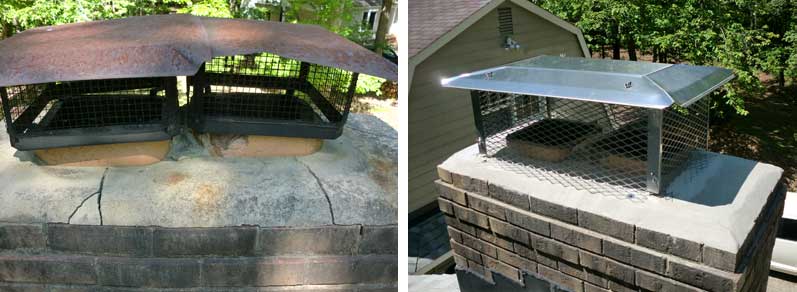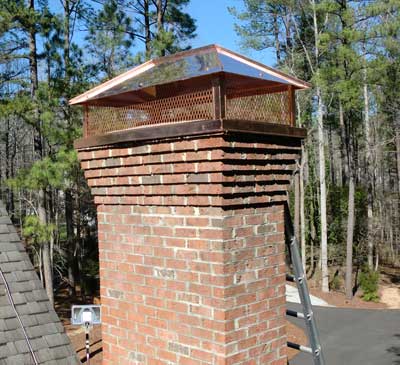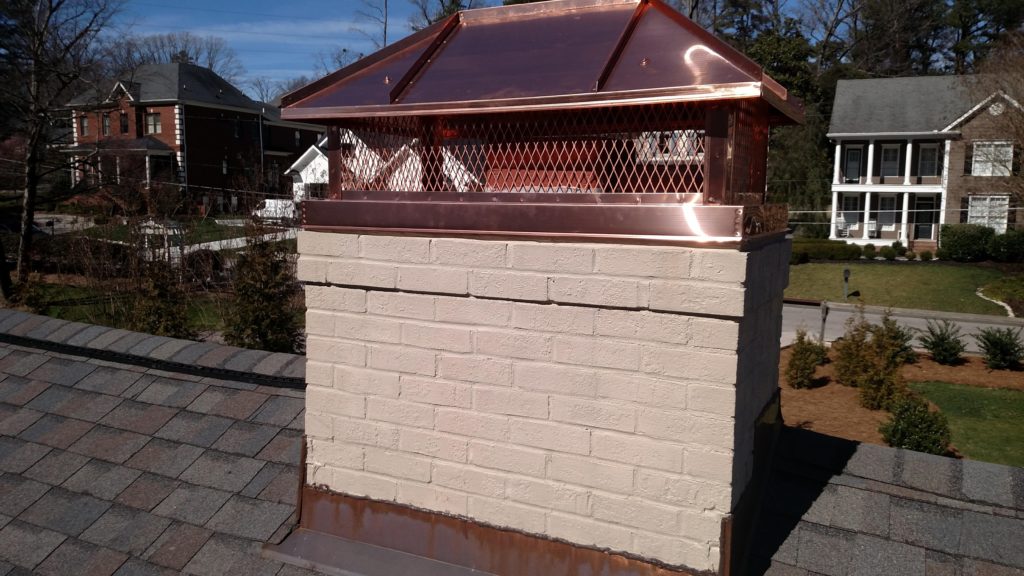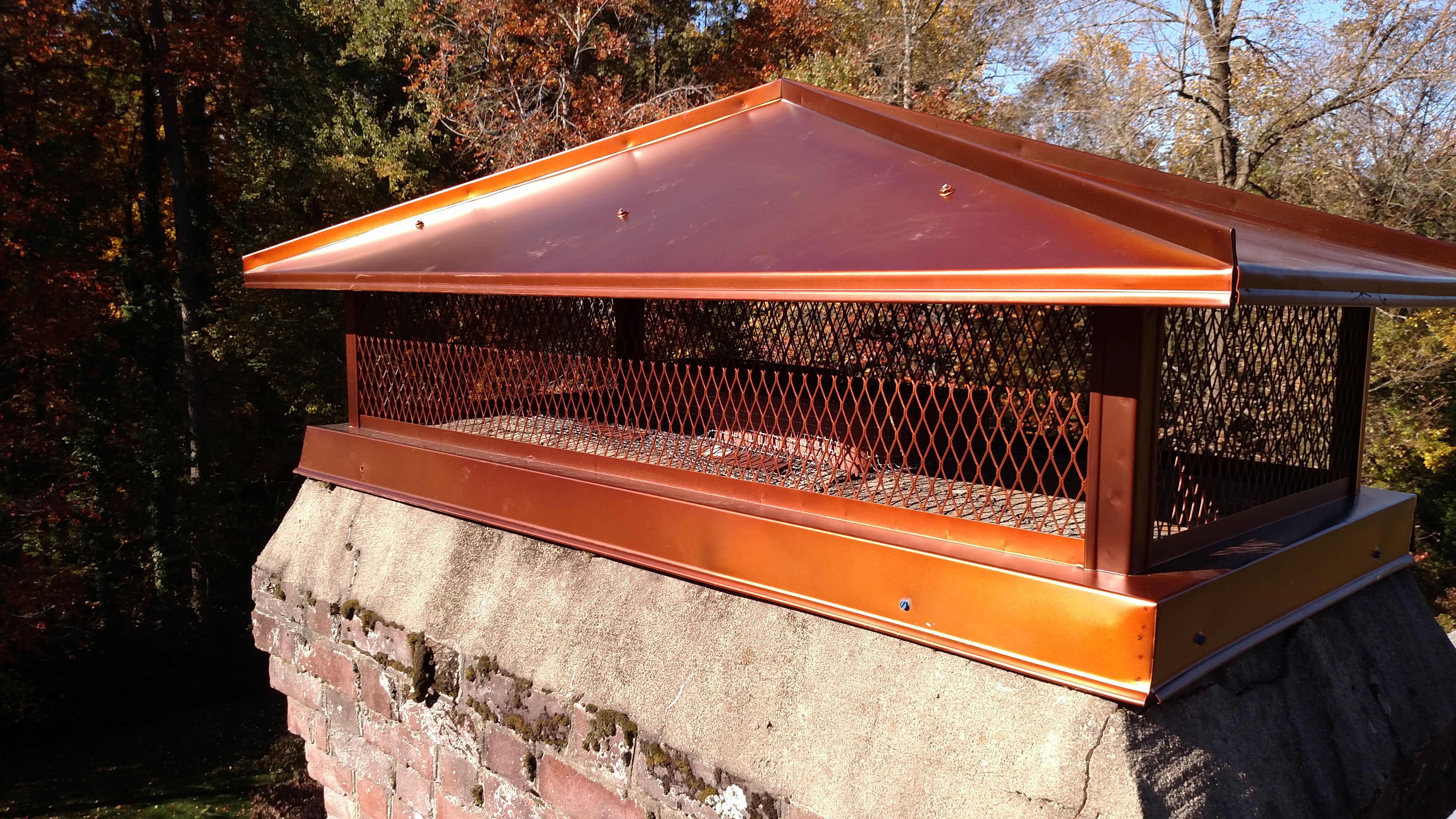Chimney Caps Are Useful And Can Be Beautiful
The basic function of a chimney cap is simple: cover the opening in the flue so water, debris, birds and other animals won’t be able to get into the chimney or house. Chimney caps come in many different styles and can be made from a variety of materials. They can be simple or extravagant.

Before and after chimney cap repair

Types of Caps
There are many types of caps so there will be one for you. They are made from many types of materials including galvanized steel, copper, stainless steel or aluminum. Generally, we install stainless steel caps, which are the most durable and long-lasting. They will not rust or corrode when exposed to the elements like the less expensive ones do.

Although stainless steel is what we recommend, some customers choose to have a more expensive copper cap installed because it matches better with their house. Most chimney caps come with side screening to keep birds and small animals out of the chimney. Caps are also sometimes called spark arrestors because they also keep sparks from leaving the chimney and potentially catching your roof or other things like dry leaves on fire.

Disadvantages Of Capping A Chimney
- If badly designed or not installed properly, the chimney cap can possibly reduce the draft of the chimney, or it can be blown off by the wind.
- If not inspected and swept on an annual basis the screen around the cap can clog. This can cause draft reductions and poor performance of your appliance
- If the wrong type of wood is used, creosote and tar can collect on the cap and run down the outside of the chimney causing discoloration of the brick or stucco
Notice that with proper installation, annual and proper maintenance, most of the disadvantages can be avoided.
Advantages Of Capping A Chimney
- The cap keeps birds and other small animals from making your home, fireplace or chimney their home
- The cap will prevent rain from entering the home eliminating moisture issues that lead to irritating smells
- The cap helps extend the life of the crown or chase cover by reducing the amount of ice and rain that can collect on it
- The cap helps increase the draft in areas that have a lot of wind
As you can see the advantages outweigh the disadvantages. That’s why we recommend chimney caps on the majority of chimneys we maintain. While there are standard sizes that are popular for caps and fit on a majority of chimneys, some chimney caps have to be custom made. Contact us today!
Waterproofing your chimney can extend its life so check it out along with the other applications available for your chimney.
